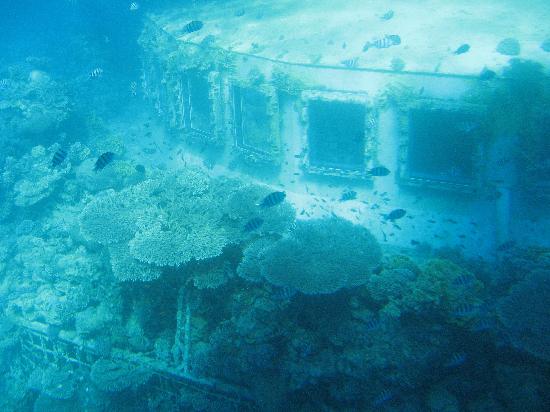
Until man invented ways of staying underwater for more than a few minutes, the wonders of the world below the sea were almost unknown. The main problem, of course, was air. How could air be supplied to swimmers below the surface of the sea? Pictures made about 2,900 years ago in Asia show men swimming under the surface with air bags tied to their bodies. A pipe from the bag carried air into the swimmer's mouth. Yet, little progress was made in the invention of diving devices until about 1490, when the famous Italian painter, Leonardo da Vinci, designed a complete diving suit,
In 1680, an Italian professor invented a large air bag with a glass window to be worn over the diver's head. To 'clean' the air, a breathing pipe went from the air bag, through another bag to remove moisture, and then again to the large air bag. The plan did not work, but it gave later inventors the idea of moving air around in diving devices.
In 1819, a German, Augustus Siebe, developed a way of forcing air into the head-covering by a machine operated above the water. Finally, in 1837 he invented the 'hard-hat suit', which was to be used for almost a century. It had a metal covering for the head and an air pipe attached to a machine above water. It also had small openings to remove unwanted air. But there were two dangers to the diver inside the hard-hat suit. One was a sudden rise to the surface, caused by too great a supply of air. The other was the crushing of the body, caused by a sudden dive into deep water. The sudden rise to the surface could kill the diver; a sudden dive could force his body up into the head covering, which could also result in death.
Gradually, the hard-hat suit was improved so that the diver could be given a constant supply of breathable air. The diver could then move around under the ocean without worrying about his air supply.
During the 1940's, diving underwater without a special suit became popular. Instead, divers used a breathing device and a face-mask, i.e., a small covering worn on the face made of rubber and glass. To increase the swimmers' speed another new invention was used - rubber shoes shaped like giant duck feet called flippers. The manufacture of snorkels, which are rubber breathing pipes, made it possible for the divers to float on the surface of the water, observing the marine life below them. A special rubber suit which prevented heat loss made diving comfortable enough to collect samples of plant and vegetable life even in icy waters.
The most important advance, however, was the invention of a self-contained underwater breathing apparatus, which is called a 'scuba'. Invented by two Frenchmen, Jacques Yves Cousteau and Emile Gagnan, the scuba consists of a mouthpiece joined to one or two tanks of compressed air which are attached to the diver's back. The scuba makes it possible for a diver-scientist to work 200 feet underwater - or even deeper - for several hours. As a result, scientists can now move around freely at great depths, learning about the wonders of the sea.
No comments:
Post a Comment